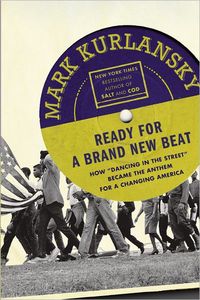

Purchase
How "Dancing in the Street" Became the Anthem for a Changing America
Riverhead Hardcover
July 2013
On Sale: July 11, 2013
288 pages
ISBN: 1594487227
EAN: 9781594487224
Hardcover
Add to Wish List
Non-Fiction
Can a song change a nation? In 1964, Marvin Gaye, record
producer William “Mickey” Stevenson, and Motown songwriter
Ivy Jo Hunter wrote “Dancing in the Street.” The song was
recorded at Motown’s Hitsville USA Studio by Martha and the
Vandellas, with lead singer Martha Reeves arranging her own
vocals. Released on July 31, the song was supposed to be an
upbeat dance recording—a precursor to disco, and a song
about the joyousness of dance. But events overtook it, and
the song became one of the icons of American pop culture.
The Beatles had landed in the U.S. in early 1964. By the
summer, the sixties were in full swing. The summer of 1964
was the Mississippi Freedom Summer, the Berkeley Free Speech
Movement, the beginning of the Vietnam War, the passage of
the Civil Rights Act, and the lead-up to a dramatic
election. As the country grew more radicalized in those few
months, “Dancing in the Street” gained currency as an
activist anthem. The song took on new meanings, multiple
meanings, for many different groups that were all changing
as the country changed.
Told by the writer who is legendary for finding the big
story in unlikely places, Ready for a Brand New Beat
chronicles that extraordinary summer of 1964 and showcases
the momentous role that a simple song about dancing played
in history.
Comments
No comments posted.
Registered users may leave comments.
Log in or register now!
| 


 © 2003-2024 off-the-edge.net
all rights reserved Privacy Policy
© 2003-2024 off-the-edge.net
all rights reserved Privacy Policy